Psssst….. Cauliflower is the new Kale.
That’s so 2013. Food trends make me crazy. The whole notion of “food as medicine” makes me nuts. The “Good Foods/Bad Foods” thing, the “Clean Eating” thing, the whole idea that we need to “Cleanse our bodies of toxins” – for goodness sake! Just limit your processed foods, eat proper portions, and make sure you get enough fibre.
Cauliflower, like many of its brassica relatives (broccoli, cabbage, brussels sprouts) was never one of my childhood favorite foods. Served to me boiled, its vaguely sulphury aroma and watery, squishy texture never held much appeal – it was tolerable served raw. YEARS ago, Bob Blumer (of tv fame) suggested that roasted florettes were more snackworthy than popcorn, so I tried that — he was wrong.
Now, “it’s the New KALE”. (I’m not so fond of kale either, I must say.) What cannot be denied in the big picture is that cauliflower is better for you than potato chips. Recently I taught a class featuring cauliflower at the high school where I volunteer, hoping to convince myself that this currently-popular vegetable could be elevated from my childhood memories. Cauliflower soup, a very simple, straightforward recipe, turned out to be the winner of the day. Silky in texture and mild in flavor, it’s a soup base that can take off in any direction you choose. You can make a little or a lot, and it freezes beautifully. It’s gluten-free, lactose-free, can be vegetarian if that’s your bent, and has plenty of complex carbohydrate and soluble fibre, with precious little fat. It’s my current “soup for dinner” starting point of choice.
And of course, it’s ever so fashionable. Join the trend!

It’s so beautiful!
When you choose a cauliflower, make sure it is very firm, tight, white, and fresh-looking. Once you get it home, cook it as soon as you can. You can get lovely white cauliflower year-round, although the supply waxes and wanes a little, and the price certainly fluctuates. In the fall, if you happen to live in cauliflower country, you can get beautiful purple or orange varieties, the cross-bred Broccoflower, or the bright green Romanesco. I wouldn’t use those varieties for soup, not because they wouldn’t be good, but because they are so beautiful, they should be enjoyed as themselves. Stick with good old white cauliflower for this recipe. While I have not tried it, I suspect frozen cauliflower would work equally well.
Cauliflower Soup
WARNING: This is a VERY BIG BATCH – it makes about 10 servings of soup base – terrific if you have the freezer space, not so handy if your freezer is already full. See the note below for smaller batch directions.
- 2 cups diced onion (could be leeks – use lots)
- 2 Tbsp Butter or oil (any kind, even olive oil)
- ½ tsp salt
- 8 cups diced Cauliflower
- 1 can White Beans (kidney or cannellini), drained and rinsed (540ml, 19 oz)
- 1 ½ litres (6 cups) chicken or vegetable stock, or enough to cover everything
- Salt and pepper to taste
NOTE: I used 1 whole large head of cauliflower, and one good-sized yellow onion, which came to about 8 cups of cauliflower pieces and 2 cups of onion. The ratio of onion to cauliflower is roughly 1:4, or 1 part diced onion to 4 parts diced cauliflower.
For a smaller batch:
- ¼ cup diced onion (could be shallot)
- 2 tsp butter or oil
- Pinch of salt
- 1 cup diced cauliflower
- ½ cup cooked white beans, rinsed and drained
- 2 – 3 cups chicken or vegetable stock
Soup is not chemistry – there is some leeway in measurement of ingredients.

Method:
When you are breaking up your cauliflower for dicing, discard the leaves and the base of the stem, but don’t discard the core – it’s just as tasty as the rest of the head. The florets will cook more quickly than the solid core, so dice the core fairly small. Otherwise, make sure your floret pieces are uniform in size, so they all cook in the same time. The smaller the dice, the more quickly the cauliflower will cook. Also, the smaller the dice, the tighter it will pack in the measuring cup – just be aware.
In a large saucepan, melt the butter (or heat the oil). Add the onions, sprinkling with salt. Sweat the onion (cook without browning) over medium low heat for about 4 minutes, until they are softened and translucent.


Add the cauliflower and beans.
Add enough stock to just cover everything.


Bring to the boil, then reduce to a simmer over low heat and cover. Cook until the cauliflower is tender, about 20 minutes. Keep checking, to avoid over-cooking. If you keep simmering forever, those sulfur fumes will fill the house. Remember – the smaller the dice, the quicker the cook.
Working in batches, puree the soup in a blender. You can use an immersion blender (stick blender) or a food processor. You get to choose the thickness and texture you prefer. I whizzed mine until it was absolutely creamy smooth, adding a little more stock, but leaving it fairly thick. You may want your soup to be a little more chunky.


If you are planning single servings, freeze your soup before seasoning in 1-cup batches in containers or zip-closure freezer bags (be sure to mark them with identity and date). Freezing sometimes alters flavors, so season as you serve.
Cool your soup in a partially covered container in the fridge, stirring every 15 minutes or so to hasten the process. Let it get completely cold before packaging and freezing.


Now come the choices, and there are many.
Dairy: You can add a splash of cream, or a spoonful of yogurt or sour cream – or not, as you choose. Cauliflower and cheese have been paired since forever — you can add any kind of cheese you like, from Stilton to smoked cheddar, or just a little shake of parmesan. Heat the soup, then stir in whatever you choose until blended. Taste, add seasoning (salt and pepper at least) and serve.
Cheddar and a little hot sauce is a sure-fire winner.

Protein: Bacon is never wrong. You could get a chowder effect with a little leftover salmon, shrimp or crab. Some diced smoked sausage is delicious, as is ham, smoked turkey, a little leftover pulled pork. Heat up whatever protein you choose in a saucepan, then stir in the soup base, season, and serve.
Bacon AND Mushrooms! There must be guests coming.

Vegetables: Anything soup-worthy will work. Mushrooms, of course – saute some up and then add the soup base right to the sauteeing pan – adjust the thickness, season and serve. Make vegetable chowder with corn, peas, carrots, leftover baked or boiled potato. Add frozen spinach or kale. Add chopped cooked broccoli and cheese – Yum! Heat the soup, stir in the frozen or leftover vegetables, and then heat just a tad more until the veg is hot and the soup is too. This can be done in the microwave, but it’s easier to monitor in a saucepan. If you want veg and cheese, add the cheese last.
You could even add kale….. but I added broccoli, Parmesan, and just a little bacon, because everything’s better with bacon.

Seasoning: Well, it just depends on what you like. Smoked paprika is my current favorite. Hot sauce was a big hit at the school. Worcestershire sauce, that mighty workhorse, adds great flavor. It’s amazing how well Montreal Steak Spice goes with a wide variety of things – must be that hint of dill. Garlic and/or ginger could be added to the soup base along with the onions for a small batch, or you could add some granulated garlic when you re-heat – give it time to re-hydrate. How about Curry? Just remember, taste is the key. If your soup tastes a little bland, it probably needs a little salt, or maybe a squeeze of lemon or a few drops of balsamic vinegar.
You can stick to the basics, or mix and match any of the suggestions above. Take this opportunity to exercise your taste buds and take charge of your personal favorite flavor profile – you just might surprise yourself!




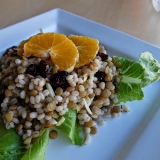
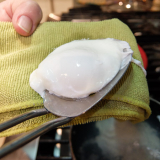
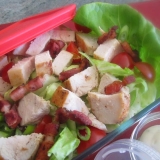
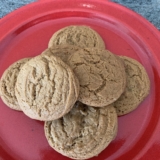
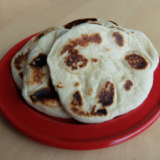
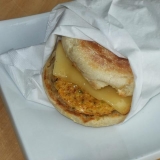
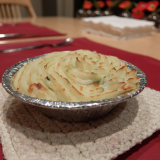
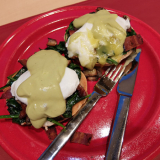

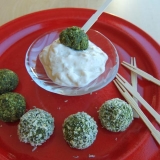

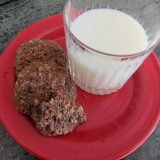
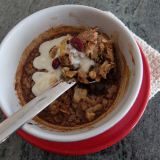
Leave A Comment